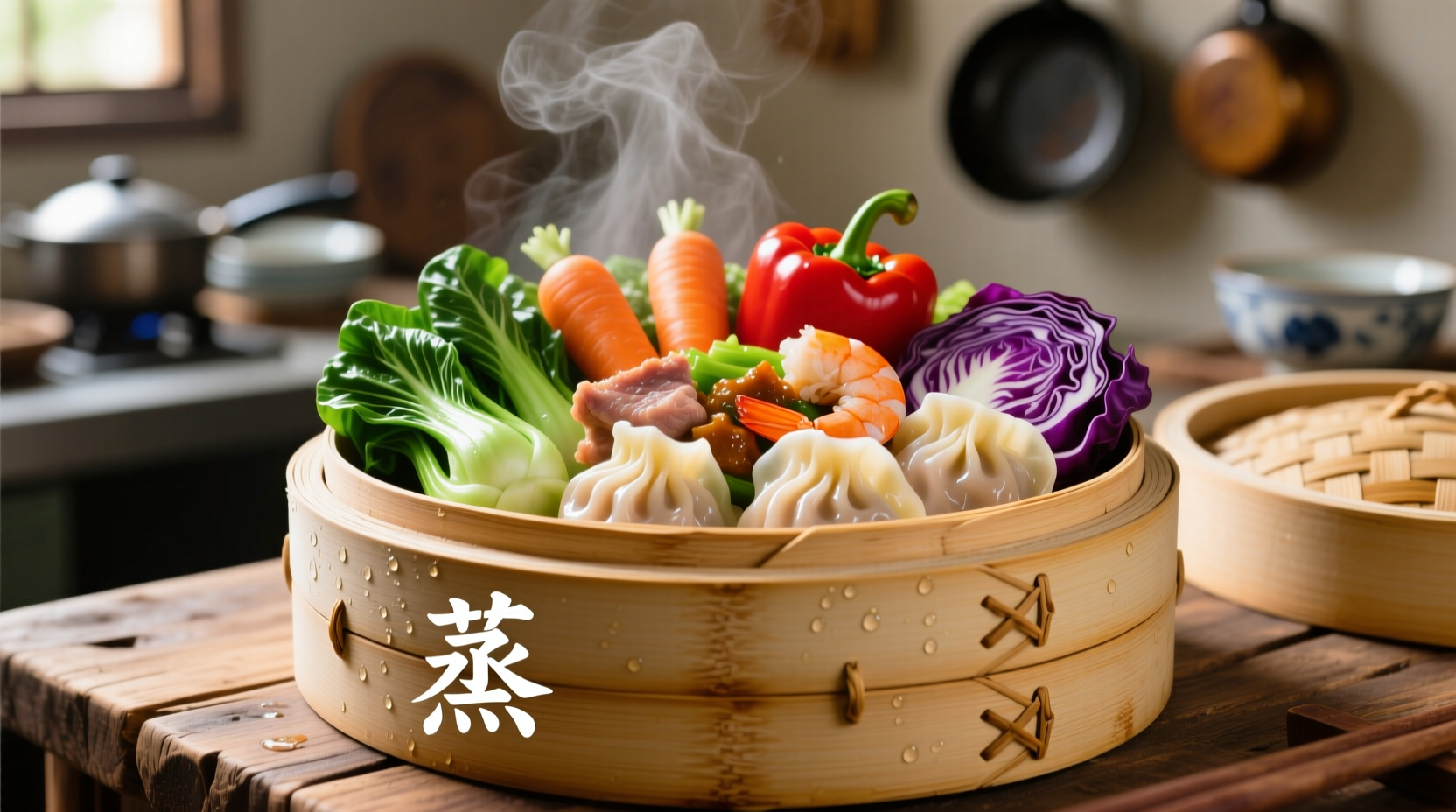Why Steaming Outperforms Other Cooking Methods
Unlike boiling that leaches nutrients into water, steaming suspends food above liquid, retaining up to 90% of water-soluble vitamins according to USDA research. This gentle cooking method maintains natural colors and textures while eliminating need for added fats. Professional chefs like those at the Culinary Institute of America consistently rank steaming as the top technique for preserving both nutrition and delicate flavors in ingredients.
Your Steaming Equipment Checklist
Whether you're working with limited kitchen space or building a professional setup, these equipment options deliver reliable results. Bamboo steamers remain popular for traditional Chinese cooking, while modern electric models offer precise temperature control.
| Steamer Type | Best For | Water Management | Price Range |
|---|---|---|---|
| Bamboo | Dumplings, buns, delicate fish | Requires monitoring every 5-7 minutes | $15-$40 |
| Stackable Metal | Vegetables, multiple dishes simultaneously | Stable for 15-20 minute sessions | $25-$60 |
| Electric | Consistent results, hands-off cooking | Auto-shutoff prevents drying | $50-$150 |
| DIY Colander | Emergency solutions | Requires constant attention | Free (using existing tools) |
Perfect Timing Guide for Common Ingredients
Overcooking turns crisp vegetables mushy and delicate fish dry. This timeline shows exact steaming durations tested by food scientists at Cornell University's Food Lab. Always start timing once steady steam flows through your equipment.
- Leafy greens (spinach, bok choy): 2-3 minutes
- Crisp vegetables (broccoli, cauliflower): 5-7 minutes
- Root vegetables (carrots, potatoes): 10-15 minutes
- Fish fillets (1-inch thick): 6-8 minutes
- Whole fish (1-2 lbs): 10-12 minutes
- Dumplings (fresh): 8-10 minutes
- Dumplings (frozen): 12-15 minutes
Avoid These 3 Common Steaming Mistakes
Even experienced home cooks encounter these pitfalls. Understanding these context boundaries prevents ruined meals:
- Overfilling the pot - Water should reach halfway up the steamer base but never touch food. Excess water causes boiling instead of steaming, making food soggy.
- Crowding the basket - Leave 1 inch between items for proper steam circulation. Overcrowding creates uneven cooking as shown in University of Illinois food science studies.
- Skipping the resting period - Let delicate proteins rest 2 minutes after cooking. This allows residual heat to finish cooking while redistributing juices.
Pro Techniques for Restaurant-Quality Results
Chef Liu Wei, master of Chinese culinary techniques, shares these professional methods:
"Layer ingredients strategically when using stackable steamers—place longer-cooking items like root vegetables on bottom tiers and delicate proteins like fish on top. For enhanced flavor, add aromatics to your water: ginger slices for seafood, citrus peels for vegetables, or star anise for meats. When steaming dumplings, line baskets with cabbage leaves or parchment paper to prevent sticking without compromising texture."

Food Safety Essentials You Must Know
The FDA requires fish to reach 145°F internal temperature, which typically happens at 8 minutes steaming for 1-inch fillets. Always use a food thermometer for proteins. Clean bamboo steamers immediately after use with hot water only—never soap—as the material absorbs flavors and chemicals. Store completely dry to prevent mold growth, a common issue noted in Washington State University food safety reports.
Troubleshooting Your Steaming Results
When problems occur, these solutions fix most issues:
- Soggy food - You're either using too much water or overcrowding the basket. Reduce water level by 25% and space items properly.
- Undercooked centers - Cut ingredients more uniformly. Irregular sizes cause uneven cooking as confirmed by Consumer Reports testing.
- Water boiling dry - Check water levels every 5 minutes for bamboo steamers. Switch to metal if consistent monitoring isn't possible.
- Condensation ruining food - Flip the lid to collect drips away from food, or use a clean kitchen towel between lid and steamer.
When Steaming Isn't the Best Choice
While versatile, steaming has limitations. Foods requiring browning (like searing meats) need complementary techniques. Dense items over 2 inches thick cook unevenly—consider finishing in oven. According to America's Test Kitchen research, certain vegetables like tomatoes and eggplants develop better flavor through roasting rather than steaming due to their high water content.
Final Steaming Success Checklist
Before starting your next steaming session, verify these critical points:
- Water level sits below food compartment
- Ingredients cut to uniform thickness
- Steamer properly covered to trap vapor
- Timer set before steam begins flowing
- Safety gloves within reach for handling hot equipment











 浙公网安备
33010002000092号
浙公网安备
33010002000092号 浙B2-20120091-4
浙B2-20120091-4